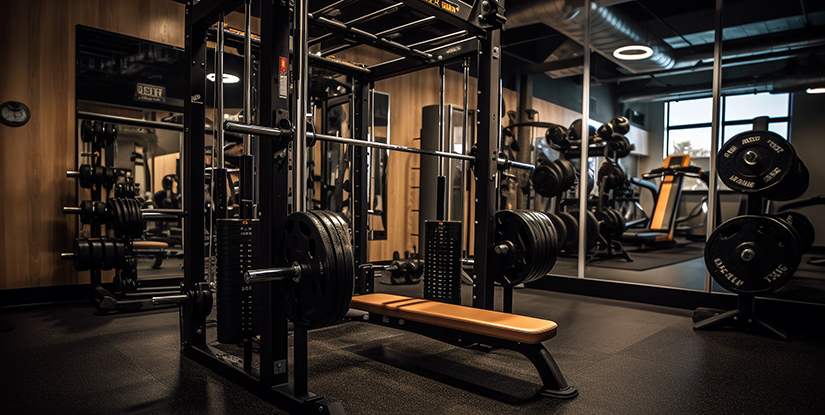Fitness Equipment Storage Solutions | Maximize Space & Safety

Efficient Fitness Equipment Storage: Maximizing Space, Safety, and Longevity
Proper storage of fitness equipment is essential for preserving performance, reducing injury risk, and optimizing limited space. Whether outfitting a home gym, commercial facility, or multi-user training area, organization strategies and the right storage solutions extend the lifecycle of equipment while improving workflow and accessibility.
Assessing Your Storage Needs
Begin with an inventory: list equipment types, weights, and dimensions. Categorize items by frequency of use—daily, weekly, or occasional—and by safety requirements. Consider structural constraints such as ceiling height, wall studs, and floor loading when planning storage for heavy or elevated systems.
Space Optimization Strategies
- Vertical storage: Use wall-mounted racks and pegboards to store bars, bands, and light accessories off the floor.
- Stacking and modular systems: Opt for stackable bumper plate trees and modular shelving to adapt as your inventory changes.
- Multi-zone layout: Allocate dedicated zones for cardio, strength, mobility, and accessories to reduce overlap and improve circulation.
- Foldable and rolling equipment: Choose foldable benches and carts with lockable casters to increase flexibility and quick reconfiguration.
Types of Storage Solutions
- Wall racks and mounts: Ideal for barbells, TRX systems, and resistance band organizers—freeing floor space and maintaining order.
- Vertical plate trees and horizontal plate racks: Select designs that distribute weight safely and allow easy plate selection.
- Dumbbell racks: Inclined or flat tiers reduce back strain during loading and maintain visual order.
- Storage cabinets and lockers: Secure small items and personal belongings in a commercial setting, using ventilated designs to prevent odor build-up.
- Ceiling hoists and pulley systems: For infrequently used heavy items, ceiling storage can be effective if structural support is verified by an engineer.
Maintenance and Equipment Care
Regular cleaning, lubricating moving parts, and inspecting fasteners will prolong equipment life. Protect rubber and vinyl surfaces from direct sunlight and extreme temperatures. Use protective mats under heavy machines to distribute load and prevent floor damage. Implement a scheduled maintenance log for commercial facilities to track inspections and repairs.
Safety and Ergonomics
- Load ratings: Ensure racks and shelving meet the combined weight of stored items and include a safety margin.
- Clearances: Maintain adequate clearance for safe loading and unloading—recommend at least 36 inches of aisle space around heavy storage zones.
- Anchoring: Anchor tall or heavy storage units to walls or floors to prevent tipping, especially in multi-user environments.
- Signage and labeling: Use clear labels for zones, weight capacities, and proper handling instructions to reduce misuse.
Climate Considerations and Environmental Controls
Humidity and temperature fluctuations can degrade metal, leather, and adhesive components. Maintain stable indoor climate where possible and use silica gel packets or desiccant cabinets for sensitive items. For outdoor or garage storage, choose weather-resistant racks and protective covers designed for UV and moisture protection.
Cost-Effective Choices and ROI
Prioritize purchases that offer modularity and durability. Investing in adjustable, steel-framed storage solutions often yields better long-term value than cheaper, lower-capacity options. Track equipment uptime and replacement costs to evaluate return on investment for different storage interventions.
Implementation Checklist
- Perform a full equipment inventory and categorize by size, weight, and use frequency.
- Measure available space and identify structural limitations.
- Select storage types that match item profiles (vertical racks for bars, plate trees for weights, cabinets for accessories).
- Install anchoring and load-rated hardware; verify by a qualified installer when needed.
- Establish cleaning and inspection schedules; train staff or household members in proper handling.
FAQs
- How much space do I need for a home gym? - Plan for at least 50–100 sq ft for basic setups; adjust for cardio machines and safety clearances.
- Are wall mounts safe for heavy barbells? - Yes if mounts are anchored into studs or concrete and rated for the load.
- How should I store rubber bumper plates? - Use plate trees or horizontal racks; avoid prolonged sun exposure to prevent degradation.
- Can equipment be stored in a garage? - Yes with weather-resistant solutions and climate considerations for humidity and temperature swings.
- What is the best way to store dumbbells? - Use tiered dumbbell racks to minimize bending and keep spacing ergonomic.
- Do I need insurance for my equipment? - For commercial setups, insurance is recommended; for home gyms, check homeowner policies and inventory value.
- How often should equipment be inspected? - Conduct visual checks weekly and detailed inspections monthly or per manufacturer guidance.
- Are ceiling hoists practical? - They are practical for occasional storage of heavy items but require verified structural support and professional installation.
- How to prevent mold and odor in storage? - Ensure ventilation, clean gear before storing, and use desiccants or dehumidifiers in humid environments.

